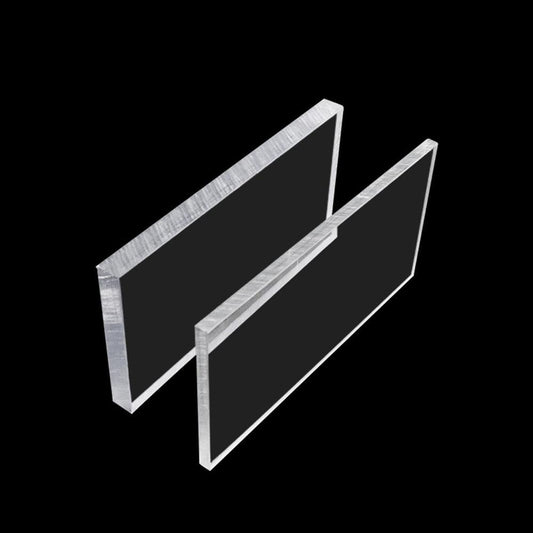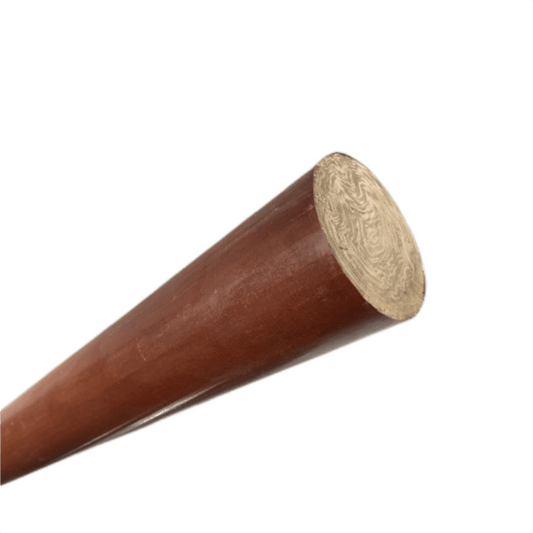In the industrial world, materials aren't just components—they’re strategic assets. Whether you’re optimizing production lines, replacing worn-out machine parts, or fabricating new custom components, choosing between HDPE and UHMWPE isn’t just a technical decision—it’s a competitive one. The right plastic material can reduce downtime, increase efficiency, and drive long-term value. This article is your practical guide to understanding how these two high-performance thermoplastics compare in structure, performance, cost, and real-world functionality—so you can make smarter decisions for your operations.
🎉🎉🎉Limited Time Offer Use code: QR4GNY08SHVR at checkout and enjoy a special discount on your entire order! 👉 UPE plastic

Understanding HDPE and UHMWPE: Key Differences and Properties
Though both HDPE (High-Density Polyethylene) and UHMWPE (Ultra-High Molecular Weight Polyethylene) belong to the polyethylene family, their differences in molecular weight result in unique mechanical characteristics that affect performance, durability, and suitability for different environments.
HDPE features a tightly packed polymer structure, giving it strong rigidity and moderate impact resistance. This makes it ideal for applications requiring dimensional stability and chemical resistance—such as chemical tanks, industrial panels, and food-safe cutting boards. Its balance between machinability and performance has made HDPE a staple across various industrial applications, especially when cost-effectiveness and fabrication speed are priorities.
UHMWPE, in contrast, has ultra-long polymer chains that create a much more abrasion-resistant, impact-absorbing material. It doesn’t just withstand abuse—it thrives in high-wear environments where constant movement, sliding contact, or mechanical shock would degrade other materials. For components like conveyor guides, chute liners, sliding bearings, or protective pads, UHMWPE offers unmatched longevity.
Machining HDPE vs UHMWPE: Techniques for Custom Plastic Fabrication
Fabricating custom plastic parts requires not only understanding the material’s behavior but also how it responds under machining conditions. HDPE is generally regarded as user-friendly. It machines cleanly, responds well to cutting and routing, and can be easily welded or thermoformed with minimal setup. It’s the preferred choice when quick turnaround or low tooling complexity is required.
UHMWPE, however, presents a unique challenge. Its slick surface and high impact strength mean it resists traditional bonding methods and often causes tool slippage if not managed correctly. Specialized sharp tools, slower speeds, and steady feed rates are necessary to maintain precision. Despite this, once fabricated, UHMWPE parts often outlast alternatives by several factors, offering a compelling return on investment in the right scenarios.
For any project involving custom plastic machining, choosing between the ease of HDPE and the durability of UHMWPE depends heavily on how critical part longevity and performance are in your system.

Wear Resistance and Friction: Which Performs Better?
Wear resistance is one of the most defining factors in the decision-making process, especially for moving parts or contact surfaces. UHMWPE is engineered to thrive in this arena. Its extremely low coefficient of friction makes it naturally self-lubricating, which reduces operational noise and the need for external lubricants. In high-speed packaging lines or material transfer systems, UHMWPE components maintain their structure and functionality far longer than most plastics.
While HDPE does offer commendable wear resistance, particularly for static parts or low-friction environments, it doesn't match UHMWPE’s capacity to withstand abrasive conditions. Over time, in highly dynamic applications, HDPE may require more frequent replacement, which can affect overall system efficiency and maintenance budgets.
So if your project involves repetitive motion, sliding contact, or abrasive materials, UHMWPE should be considered the default choice for performance-driven outcomes.
Cost Considerations: Finding the Right Balance Between Price and Performance
When evaluating materials, cost isn’t just about price per pound—it’s about lifecycle value. HDPE’s lower material and machining costs make it a clear winner for applications with moderate wear and less demanding performance requirements. It is also ideal for prototypes or non-critical components where budget is a primary concern.
UHMWPE, with its higher upfront cost, can be viewed as an investment in reliability. It reduces the frequency of part replacements, minimizes system downtime, and lowers long-term maintenance costs. For businesses where equipment reliability directly affects productivity or revenue, UHMWPE often proves to be more cost-efficient over time.
Therefore, the smarter approach is to align your material selection with operational demands. In many cases, the additional cost of UHMWPE is quickly justified by performance and longevity in harsh industrial environments.

Choosing the Right Plastic for Your Application: Real-World Use Cases
Instead of offering a generic comparison, it’s more helpful to look at how these materials are actually used in practice.
HDPE shines in industries such as agriculture, marine fabrication, water treatment, and chemical handling. Its ability to resist moisture, chemical corrosion, and UV exposure (with additives) makes it perfect for outdoor enclosures, containment systems, and fluid transport components.
On the other hand, UHMWPE is a go-to solution for logistics, material handling, food processing, and heavy-duty manufacturing. It’s commonly used in sliding tracks, robotic arms, guide rails, and any area where wear and friction dominate. Its natural toughness and non-stick properties make it food-safe and efficient in automated systems.
By analyzing the mechanical needs of your environment, you can map each material to the right role. Smart material matching ensures your components don’t just survive—they perform optimally.
Final Takeaway: Turn Industrial Performance into Long-Term Savings
Smart material selection is the foundation of smart manufacturing. Whether your project demands the affordable rigidity of HDPE or the extreme durability of UHMWPE, your success starts with choosing the plastic that fits your environment and expectations. And when you're customizing parts for high-demand industrial applications, that decision can have a direct impact on performance, cost, and scalability.
Looking to make the right choice for your next custom plastic machining project?
-
Explore our complete HDPE sheets and rods for CNC machining
-
Discover industrial-grade custom UHMWPE fabrication solutions
-
Browse our catalog of UHMWPE sheets, rods, and machined parts
-
See more options in premium acrylic and specialty engineering plastics
-
Learn how we do it on the BeePlastic manufacturing capabilities overview
-
Or submit your custom project requirements and let me help you choose the best-fit material and service solution

🎉🎉🎉Limited Time Offer Use code: QR4GNY08SHVR at checkout and enjoy a special discount on your entire order! 👉 UPE plastic
Let your material work as hard as your equipment does—request a quote today and get started with expert plastic processing designed for performance and precision.






